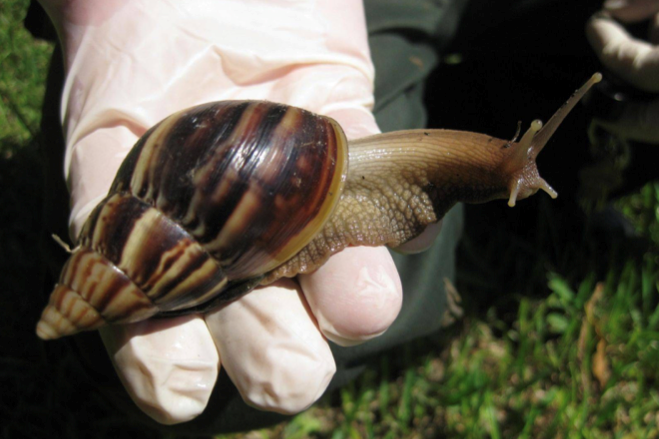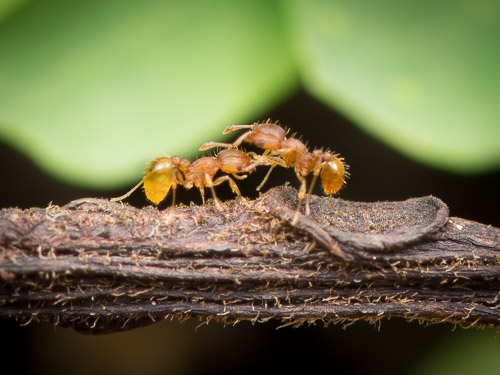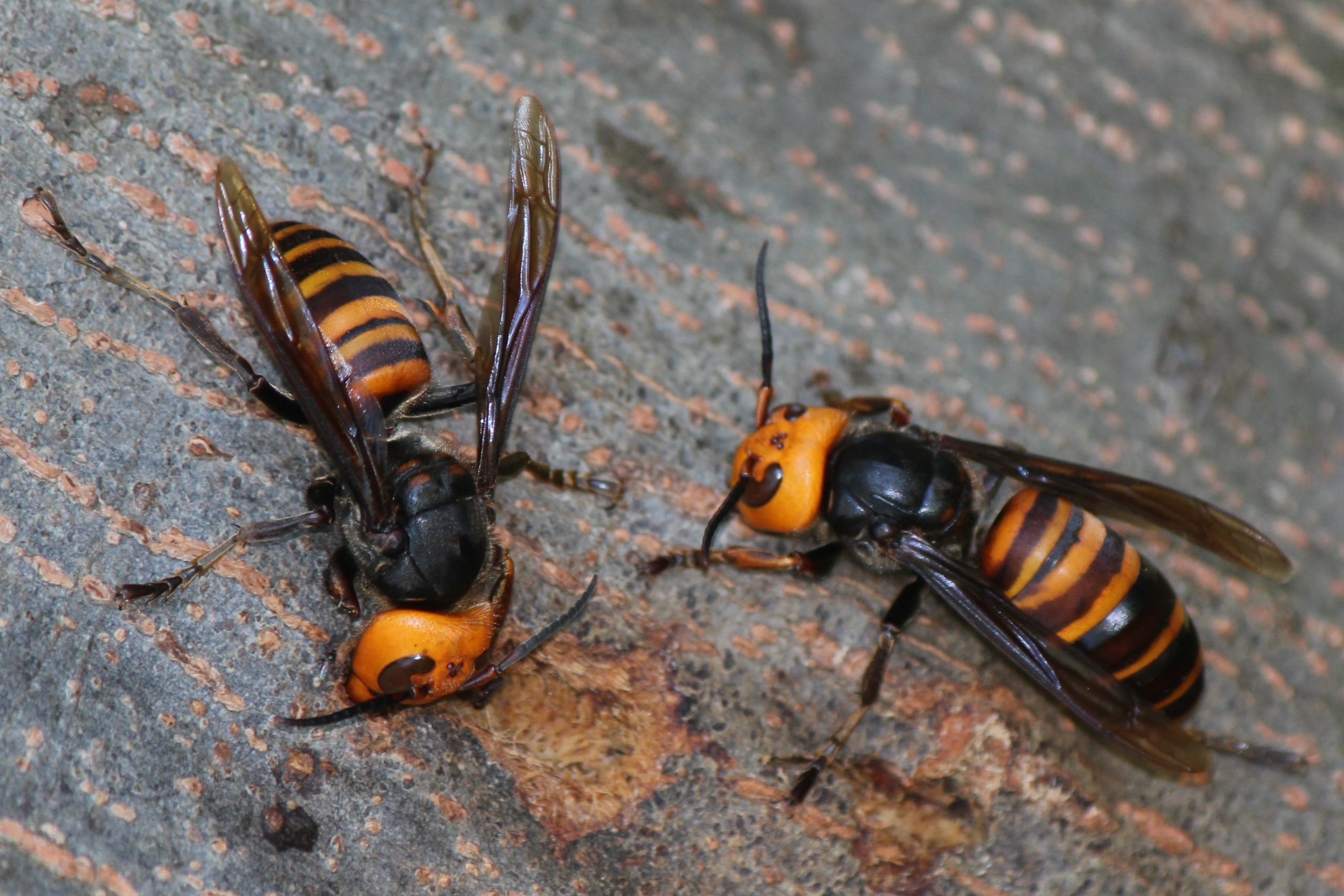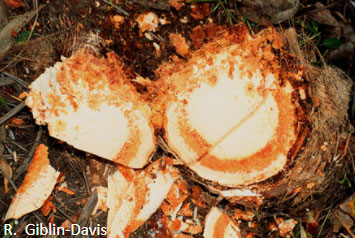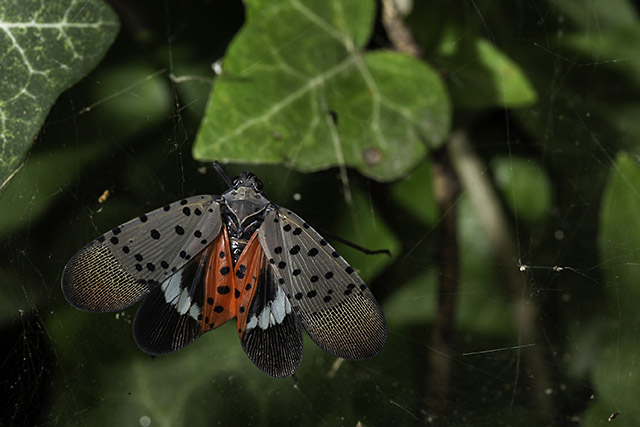Common name: Coconut rhinoceros beetle
Scientific name: Oryctes rhinoceros
Status in Hawaiʻi: Widespread on Oʻahu after initially detected in 2013. Recently detected in Waikōloa on Hawaiʻi Island in 2023. CRB continues slowly spreading on Kaua’i. Maui has had no new CRB detections since November 2023.
A major pest of coconut palms, this large scarab beetle has a single distinctive horn. Adult beetles are active at night. Palm damage and presence of adults or larvae in decaying plant material is an indication of an infestation.
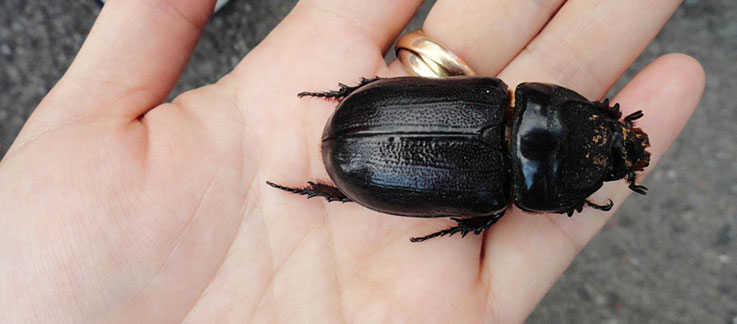
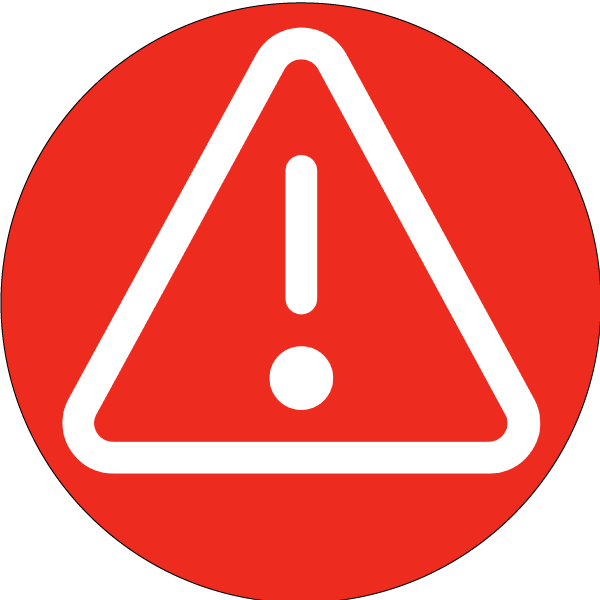
Impacts
- CRB use their front legs and horn to dig into the crown of trees. Then, they use their sucking mouthparts to feed on the juices in the inner palm spear. Extensive damage can kill host plants.
- Coconut palms are preferred, but they also attack other palm species like royal palm, date palm, fan palm, and even the endangered native loulu.
- Secondary feeding sources include foxtail palm, sago palm, pineapple, kalo, hala, banana, and sugar cane. CRB can also feed on many other palm species, usually preferring those with thicker trunks. Ongoing UH research is exploring other potential food sources in Hawaiʻi.
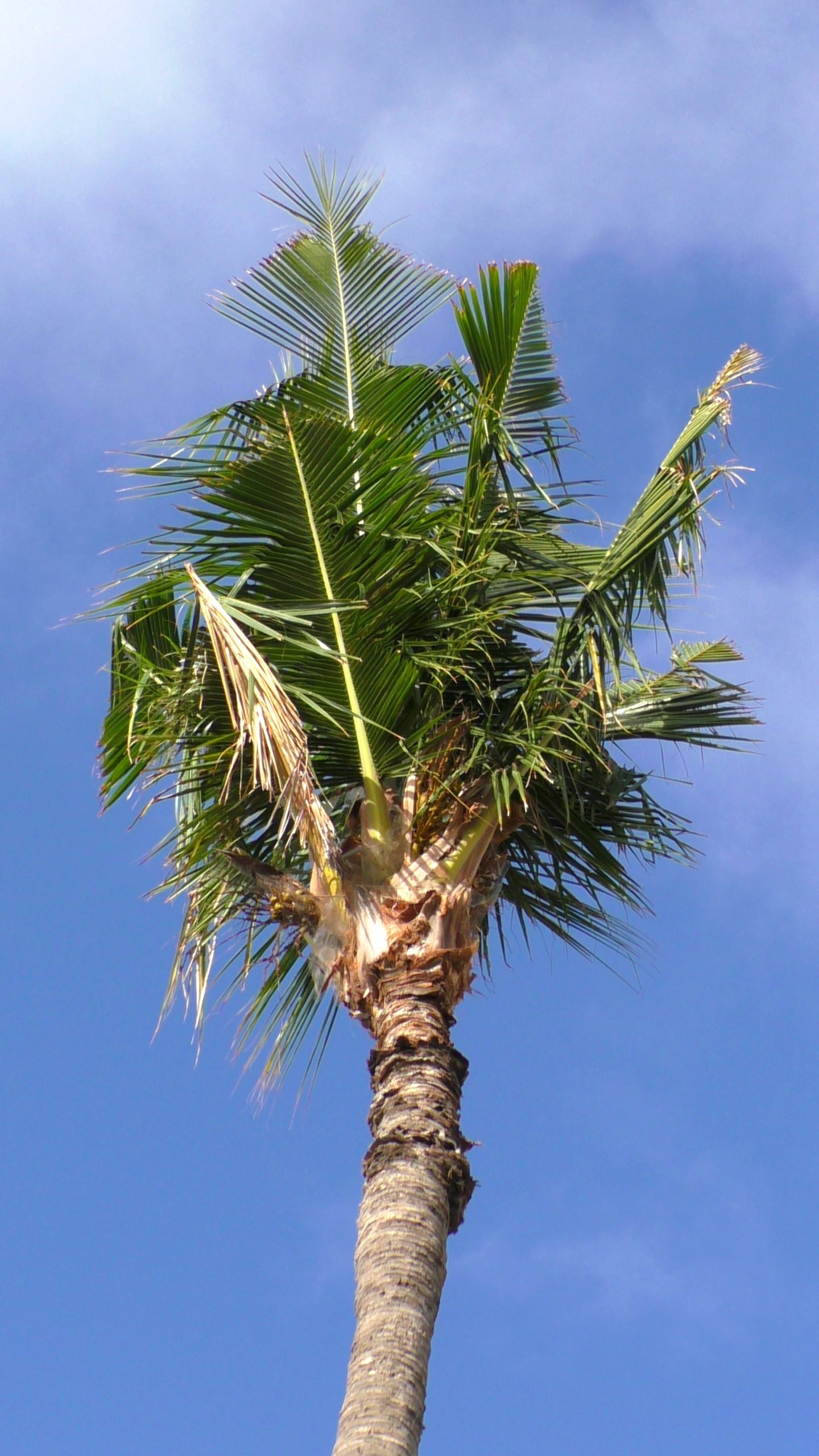
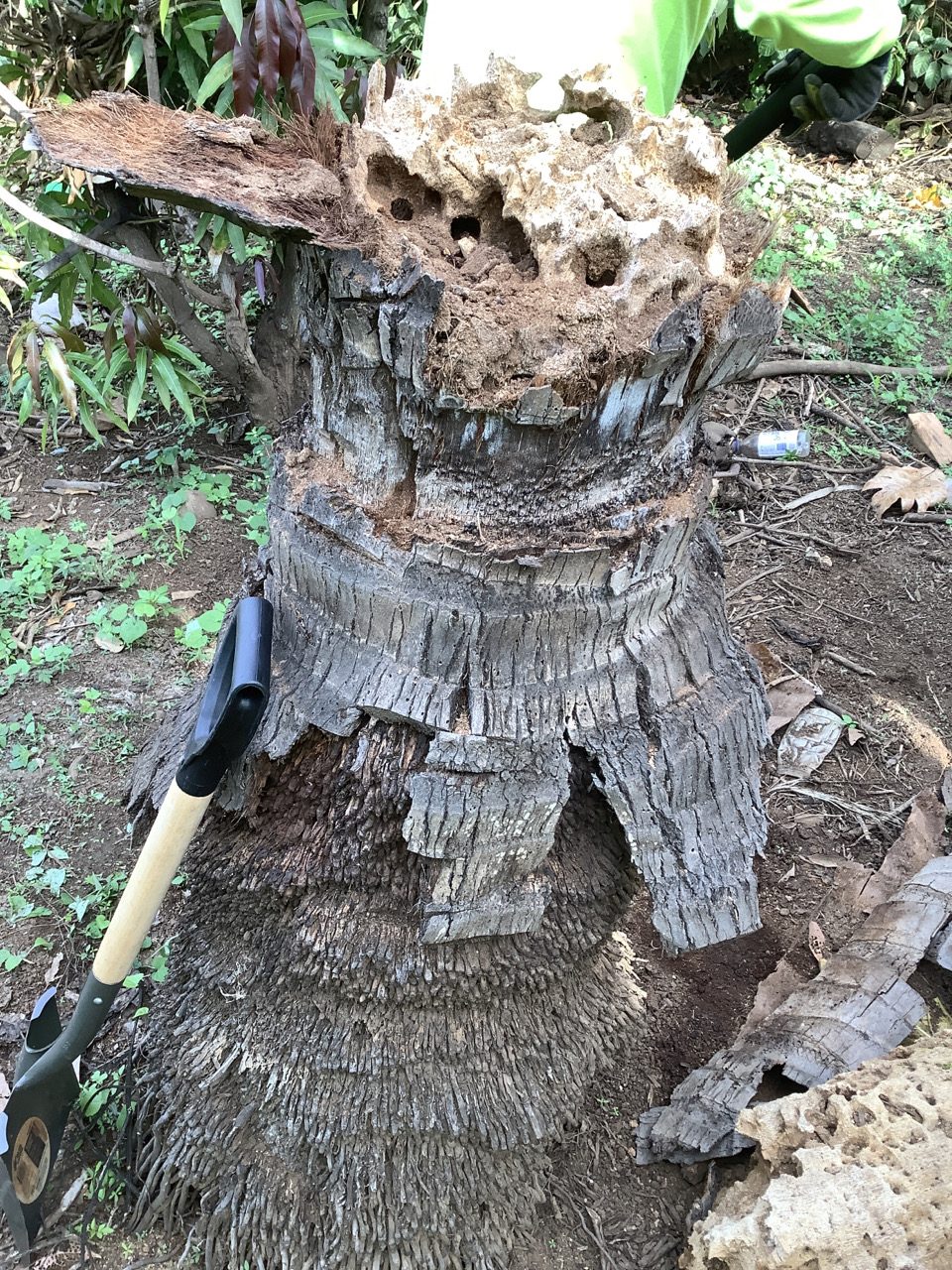
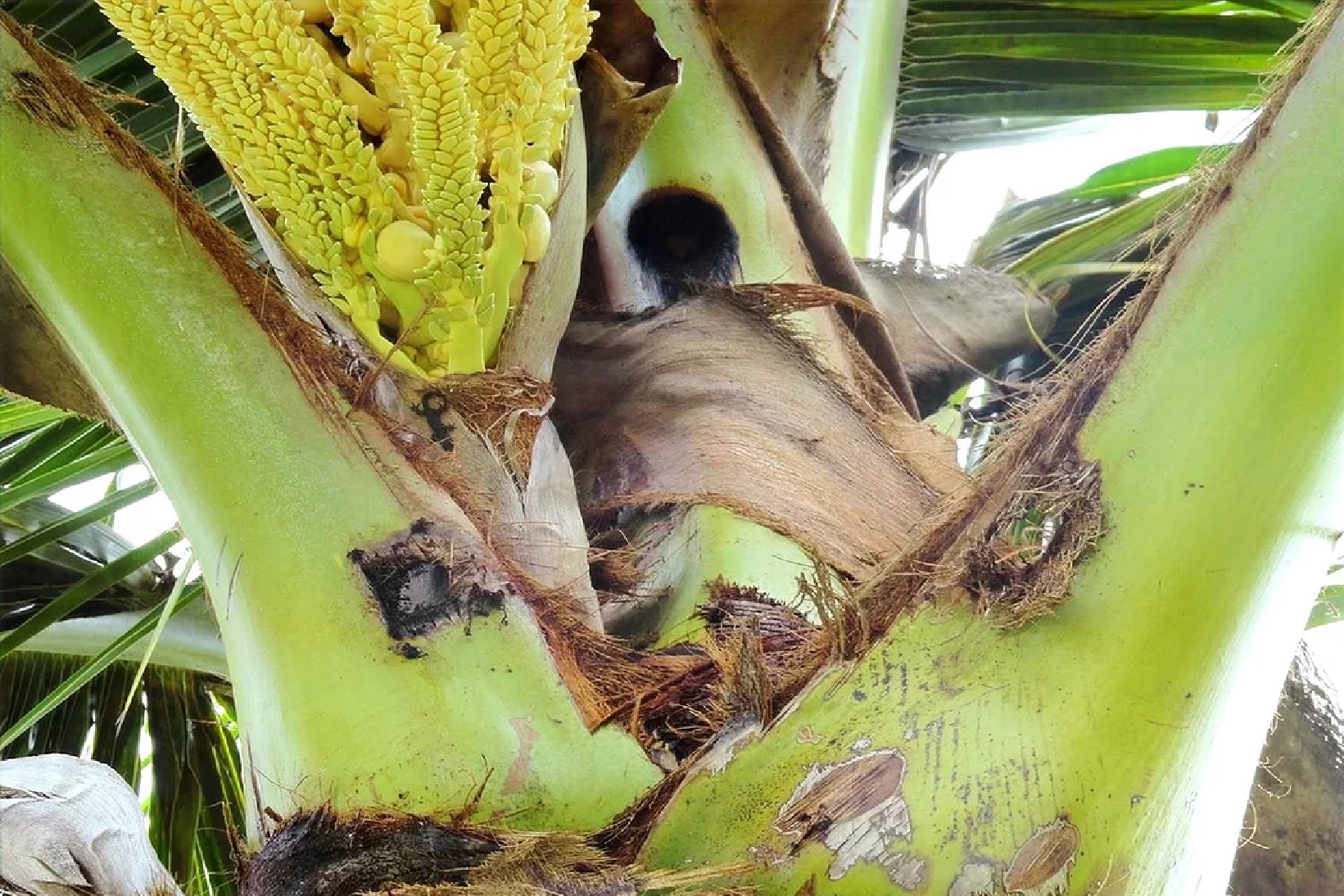
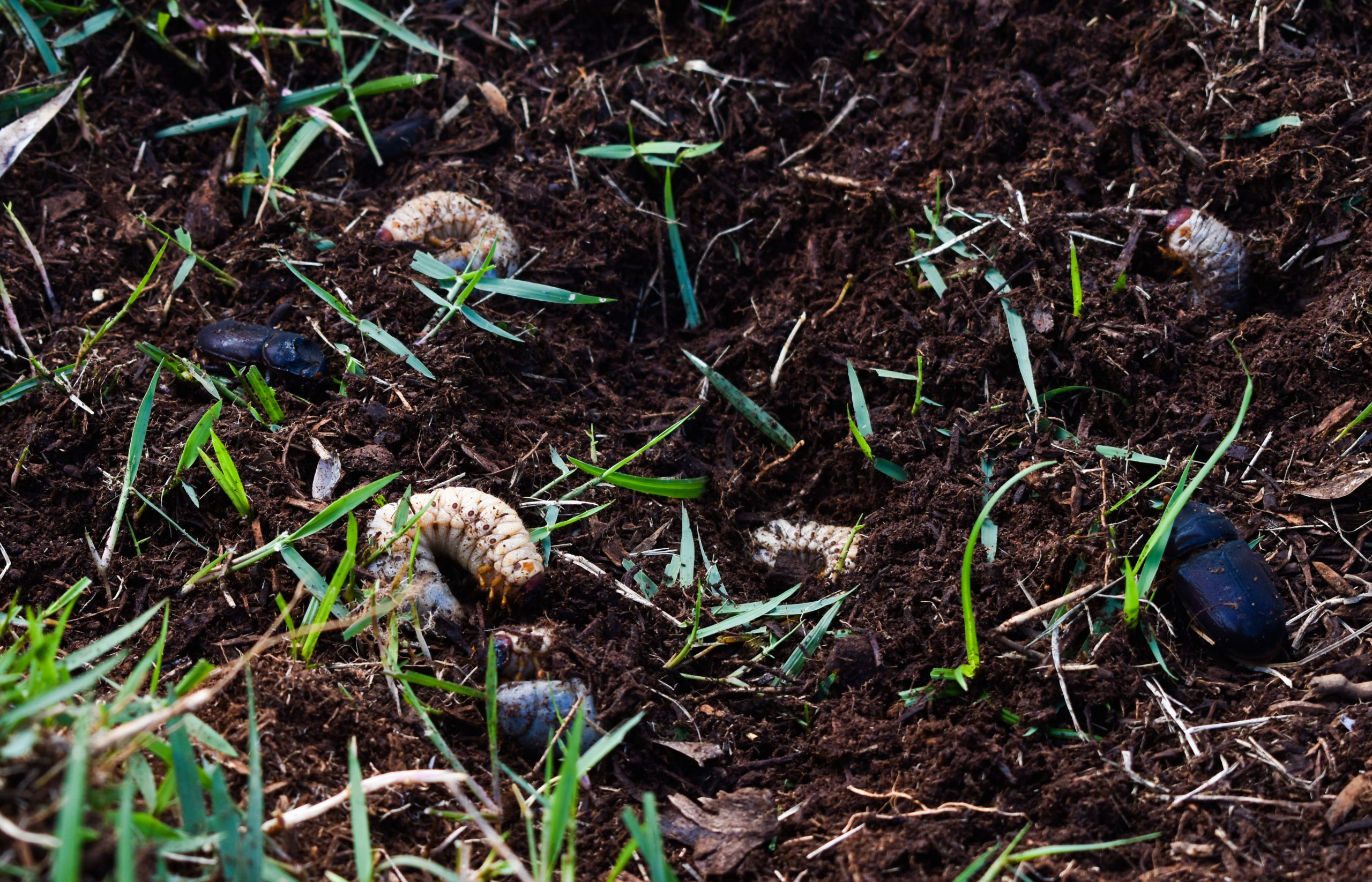

Identification
- Egg: Smaller than a grain of rice, off-white, and oval shaped.
- Larva: Adults emerge after going through three larval instar stages. Larvae are off-white, have a reddish-brown head capsule, and can grow up to 3.5 inches (8.9 cm) long.
- Pupa: Orange or brown in color.
- Eggs, larvae, and pupae are primarily found in decomposing green waste or dead palm stumps.
- Adult: Range from 1.5-2 inches (3.8-5.1 cm) long and have a shiny black exoskeleton with a single large horn. The undersides have a rust color fuzz and legs have large spikes. CRB are usually nocturnal and can fly. Adults can usually be found in decomposing green waste or in the crown of palms.
- Feeding damage indicated by oval-shaped boreholes about 2 inches (5.1 cm) typically found in midrib of fronds or in the crown or trunk of the tree. Borehole damage on fronds eventually results in V-cut shaped damage.


Vectors/Commodities
- Mulch/compost/planting material.
- Movement of green waste/mulch/tree stumps/decaying plant material.
- Palm plants.
- Adults can fly.

Distribution
- In Hawaiʻi:
- Established on Oʻahu. CRB was first detected in December 2013 on the Joint Base Pearl Harbor-Hickam military base. The entire island is now considered infested, but many areas are in very early stages with very little damage present (Airport through Hawaiʻi Kai). Treatments are focused on ports to minimize the chances of accidental transport off Oʻahu in cargo or on vehicles.
- Detected on Hawaiʻi Island October 2023. A breeding site within a dead palm stump was found, treated, and removed in Waikōloa Village. In April 2024, four adult CRB were captured in Waikōloa – three from community panel traps and one was found dead on a resident’s lānai.
- Detected on Kauaʻi May 2023. Detections continue in Līhuʻe and Wailua areas. Recently, CRB have been found near Nāwiliwili Harbor and Hanalei.
- Detected on Maui September 2023. The first detection was in a bag of mulch. In November, a CRB breeding site in a dead palm trunk in Kīhei was treated and removed. Since then, there have been no other confirmed CRB detections.
- Visit the CRB Response website for any new updates.
- Outside Hawaiʻi:
- Highest risk from Guam, adult beetles can travel in wheel wells of planes.
- CRB is native to tropical Asia from India and the Maldives in the west to the Philippines and southern China in the east.
- Introduced to many other tropical islands in the Pacific through human activity, including Samoa, Guam, Palau, Papua New Guinea, Mariana Islands, Solomon Islands, and New Caledonia.

Best Management Practices
This species is not widespread throughout the state. Prevention and early detection are key to containment and eradication efforts that protect the community and nursery/landscaping industry from further impacts.
- On O’ahu:
- Inspect and Report: Inspect host plants for damage and any high-risk materials for presence of CRB. Kill any found.
- Manage High-Risk Materials:
- Remove dead standing palms, stumps, and snags including roots.
- Don’t stockpile or move green waste or other high-risk materials without thorough inspection or proper treatment.
- Use wood mulch alternatives such as weed mats, gravel, rubber chips, etc.
- Prevent the Spread:
- Store bags of soil, compost, and mulch in a sealable thick plastic container.
- Don’t purchase bags of gardening material with CRB damage and inform store employees.
- Stay Informed:
- Keep yourself and others informed and engaged with the latest CRB prevention and control strategies.
- Ask your landscapers, nurseries, and waste disposal sites about their CRB prevention and management practices.
- Give business to companies that actively employ these best management practices.
- All other islands:
- Inspect and Report:
- Inspect host plants for damage and any high-risk materials for presence of CRB.
- If you suspect CRB, please report to 643pest.org OR call (808) 643-PEST.
- Take clear photos of feeding damage and/or of suspected CRB individuals. For larvae, take a brief video of it moving on a flat surface. Store specimens in a thick plastic or glass container for further verification.
- Manage High-Risk Materials:
- Remove dead standing palms, stumps, and snags including roots.
- Reduce stockpiling high-risk materials to prevent breeding.
- Use wood mulch alternatives such as weed mats, gravel, rubber chips, etc.
- Prevent the Spread:
- Don’t import or purchase host plants or high-risk materials from CRB infested areas (maps at crbhawaii.org).
- Before purchasing bagged gardening materials, inspect for presence of CRB or damage on host plants.
- If available in your area, participate in a community CRB trapping program to support early detection efforts.
- Stay Informed: Keep yourself and others informed and engaged with the latest CRB prevention and control strategies.
- Inspect and Report:
Other Nursery Pests
PEST PREVENTION TRAINING
An advanced education program for those on the front lines protecting Hawaii from invasive species.
Contact your local Invasive Species Committee to schedule a training for your team. Learn more
This material was made possible, in part, by a Cooperative Agreement from the United States Department of Agriculture’s Animal and Plant Health Inspection Service (APHIS). It may not necessarily express APHIS’ views.














